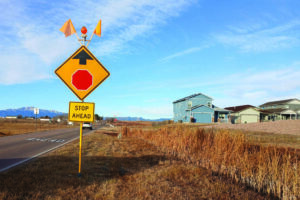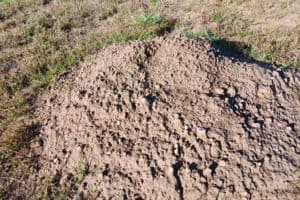Longtime local journalist Bill Radford and his wife, Margaret, live on 5 acres in the Falcon area with ducks, chickens, rabbits, dogs, cats, two noisy parrots, goats and a horse. Contact Bill at billradford3@gmail.com.
Winter officially arrives this month ñ- and I think we’re ready. We even just had electricity installed in the barn ñ- which means no more stretching extension cords from the garage to the barn to power the water tank heaters for the goats and the horse. (It also means glorious light with the flick of a switch.)The side yard is still a tangle of extension cords, though, as we have power heated water bowls for the chickens in one pen, the ducks in another and the rabbits in yet another.We’ve had the chickens and rabbits for years, so we know their setups work for winter. The ducks are new, though. We got two of them as ducklings in late winter last year, and they spent their first weeks in our bathtub; a boy and a girl, they’re both pekins (like the duck in the Aflac commercials). We added two more adult ducks ñ- one a male rescue and the other a female companion ñ- later in the year.Ducks are amusing creatures. They’re a lot more talkative (aka, noisier) and messier than chickens. And they love their water; ours don’t have a pond, but they do have a small, plastic pool to play in. And they got to enjoy an autumn swim in our little above-ground pool before we drained it for the winter.I recently built a duck house to accompany our first one (which started as a doghouse). That’s because the male pekin likes to rule the roost and often drives the two newcomers out; this way, both pairs of ducks can set up house and stay warm. During the day, the ducks usually have the fenced-in yard to explore; in the evening, I’ll go out and say, simply, “Go to bed!” – and they will, waddling into their pen with more than a little quacking.The good news, according to Countryside Daily (https://countrysidenetwork.com/daily), is that ducks, with thick, fluffy down and a layer of body fat under waterproof feathers, are quite cold-hardy. Still, there are things you can do to help them thrive during the winter months. Here are some tips culled from Countryside Daily, efowl.com and HGTV.com:
- Any duck shelter should be well-insulated but also well-ventilated, since ducks emit a lot of moisture when sleeping, and that moisture can lead to frostbitten feet. The shelter should be small enough that the collected heat of the ducks will warm it, but large enough to provide the ducks with freedom of movement.
- Provide clean, dry bedding in the shelter and change often; straw is a top option. Lay some straw down in the run or pen as well, so your ducks can get up off the snowy, cold ground when out of their shelter. (We just use two big bags of chopped straw for that purpose.) If there is room, straw bales against the inside walls of the shelter are a great insulator.
- High-fat, high-calorie treats such as cracked corn, warm oatmeal or peanuts will help keep your ducks warm overnight as they work to digest them. The treats will also help the ducks put on some extra weight for winter, which will help keep them warm as well. Since weeds and grass are scarce during the winter, give your ducks chard, kale or other cold-crop leafy greens to munch on.





